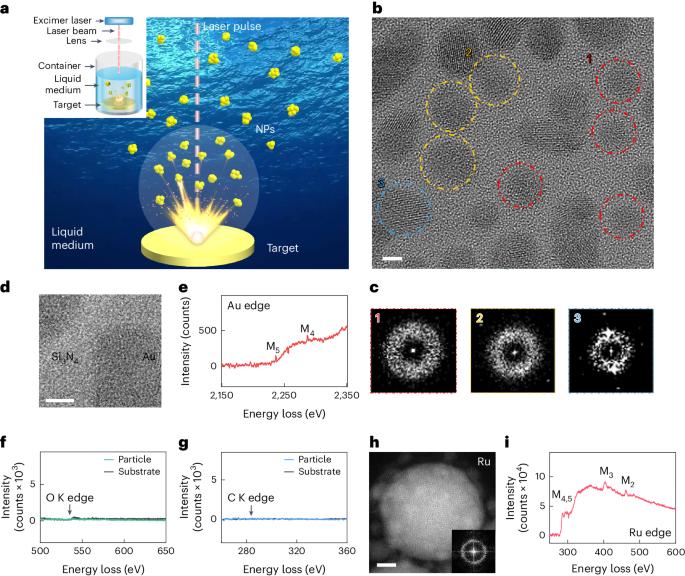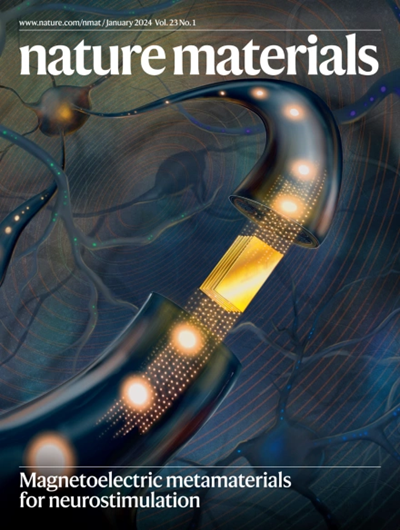Breaking the vitrification limitation of monatomic metals
IF 37.2
1区 材料科学
Q1 CHEMISTRY, PHYSICAL
引用次数: 0
Abstract
The question of whether all materials can solidify into the glassy form proposed by Turnbull half a century ago remains unsolved. Some of the simplest systems of monatomic metals have not been vitrified, especially the close-packed face-centred cubic metals. Here we report the vitrification of gold, which is notoriously difficult to be vitrified, and several similar close-packed face-centred cubic and hexagonal metals using a method of picosecond pulsed laser ablation in a liquid medium. The vitrification occurs through the rapid cooling during laser ablation and the inhibition of nucleation by the liquid medium. Using this method, a large number of atomic configurations, including glassy configurations, can be generated simultaneously, from which a stable glass state can be sampled. Simulations demonstrate that the favourable stability of monatomic metals stems from the strong topological frustration of icosahedra-like clusters. Our work breaks the limitation of the glass-forming ability of matter, indicating that vitrification is an intrinsic property of matter and providing a strategy for the preparation and design of metallic glasses from an atomic configuration perspective. It is shown that gold and several similar close-packed face-centred cubic and hexagonal metals can be vitrified, which breaks the limitation of the glass-forming ability of matter.


打破单原子金属的玻璃化限制
是否所有材料都能凝固成特恩布尔半个世纪前提出的玻璃态,这个问题至今仍未解决。一些最简单的单原子金属体系尚未玻璃化,尤其是紧密堆积的面心立方金属。在此,我们报告了在液体介质中使用皮秒脉冲激光烧蚀法对难以玻璃化的金以及几种类似的面心立方和六方紧密堆积金属进行玻璃化的情况。玻璃化是通过激光烧蚀过程中的快速冷却和液体介质对晶核形成的抑制作用实现的。利用这种方法,可以同时生成大量原子构型,包括玻璃态构型,并从中提取稳定玻璃态的样品。模拟结果表明,单原子金属的良好稳定性源于二十面体簇的强烈拓扑挫折。我们的工作打破了物质形成玻璃能力的限制,表明玻璃化是物质的内在属性,并从原子构型的角度为制备和设计金属玻璃提供了一种策略。
本文章由计算机程序翻译,如有差异,请以英文原文为准。
求助全文
约1分钟内获得全文
求助全文
来源期刊

Nature Materials
工程技术-材料科学:综合
CiteScore
62.20
自引率
0.70%
发文量
221
审稿时长
3.2 months
期刊介绍:
Nature Materials is a monthly multi-disciplinary journal aimed at bringing together cutting-edge research across the entire spectrum of materials science and engineering. It covers all applied and fundamental aspects of the synthesis/processing, structure/composition, properties, and performance of materials. The journal recognizes that materials research has an increasing impact on classical disciplines such as physics, chemistry, and biology.
Additionally, Nature Materials provides a forum for the development of a common identity among materials scientists and encourages interdisciplinary collaboration. It takes an integrated and balanced approach to all areas of materials research, fostering the exchange of ideas between scientists involved in different disciplines.
Nature Materials is an invaluable resource for scientists in academia and industry who are active in discovering and developing materials and materials-related concepts. It offers engaging and informative papers of exceptional significance and quality, with the aim of influencing the development of society in the future.
 求助内容:
求助内容: 应助结果提醒方式:
应助结果提醒方式:


